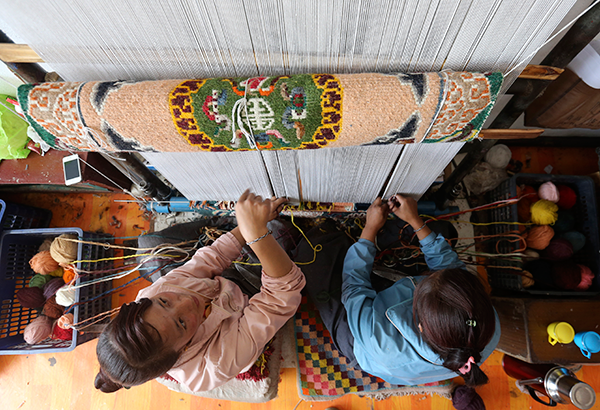Man helps renew county's interest in Tibetan tapestry
 |
|
Local women work in a tapestry cooperative founded by Tenzin Chenglai (right) in Gyangze county in Xigaze city, Tibet autonomous region. [Photo by Feng Yongbin/China Daily] |
For people living in Southwest China's Tibet autonomous region, making carpets is regarded as a household task for women, because locals use different kinds of knitwear for home decoration.
But Tenzin Chenglai is a male who is now focusing on improving Tibetan tapestry-knitting carpets with wool.
"I thought of finding a job with a stable income after college. I thought that was what I went to college for, but I find that what I am doing today is fascinating and brings benefit to more people," the 26-year-old artisan says.
He spends most of his days in a tapestry cooperative he established in 2014. It is array of single-story houses covering 800 square meters in Gyangze county in Tibet's Xigaze city.
Gyangze is home to Tibetan tapestry. The carpets can be found in almost every house to attract good fortune in this part of Tibet.
The knitting technique enjoys more than 600 years of history, and the tapestry is known abroad along with Persian silk rugs and Turkish carpets.
Tibetan women learn the knitting skill through years of practice as they grow up. But it is not easy for the artisans to sell their works outside, thereby limiting the potential for income. At the same time, fewer young Tibetans are willing to learn it due to the time required to master the skill.
















